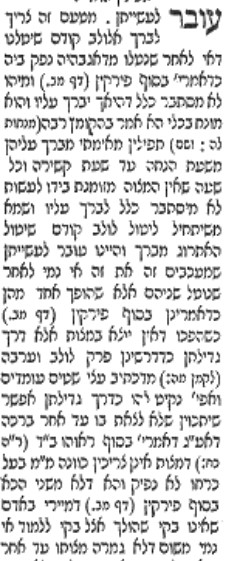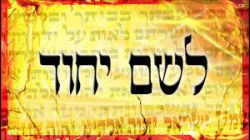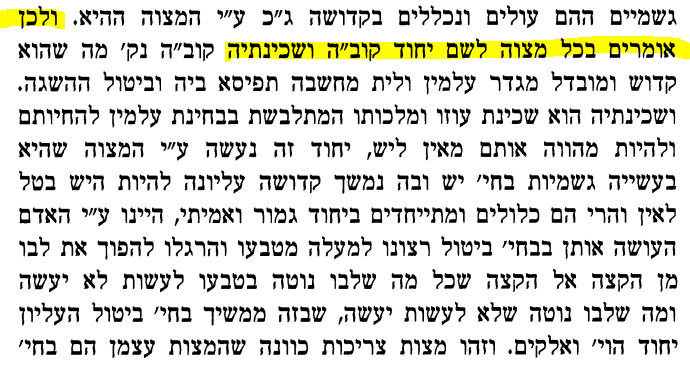BS”D
Sukkah 39a (2)
Sivan 22, 5782. June 21, 2022
1- We spent most of the Shiur learning a fundamental Tosfos – עובר לעשייתן – that discusses the issue of making the ברכה on the Lulav.


The Mitzvah of Lulav is unique and thus the need for clarification.
In general, Brachos on Mitzvos need to be made prior to the קיום המצוה. If the Mitzvah was performed, according to many opinions, one cannot say the Brachah.

Now, ‘prior’ does not mean merely before the Mitzvah, but rather immediately before. No time must pass between the ברכה and the Mitzvah.
Just like with Tefillin, we do not say the Brachah when it is still in the Tefillin bag. It is said when it’s already on the arm right before tightening the knot or on the arm.

Lulav presents a problem since the Lulav and Esrog must be close by and ready to be lifted. But when one lifts them, he is יוצא. So when does one make the ברכה? Prior to lifting it is too early, as he has not ‘engaged’ the Lulav and Esrog yet. And once it’s lifted, it’s already done.

That is the issue Tosfos tackles and offers 4 answers:
A – The ברכה is made when picking up just the Lulav. He is not יוצא yet and therefore considered ‘prior’, because the lifting of the Lulav is only the beginning of the Mitzvah since one needs to pick up the Esrog as well to fulfill the Mitzvah of ארבע מינים.
B – One picks up both the Lulav and the Esrog and then makes the Brachah, but the Esrog (or the Lulav) is held upside down. So the ברכה is made prior to the Mitzvah. At the completion of the Brocho one turns the Esrog (or the Lulav) rightside up and only then is one יוצא.

C – Both the Lulav and the Esrog are lifted right side up. To avoid being יוצא, one has the כוונה NOT to be יוצא. The ברכה is then made and the intention is only now to be יוצא. Thus the ברכה, is thus made prior to the מצווה.

D – There is no issue at all even after shaking the Lulav and Esrog since in addition to the holding the Lulav and Esrog after the ברכה, we do נענועים. Meaning that this מצווה is a long process so the ברכה can be made even after the first moment of its start.
This fourth answer is interesting (נענועים is part of the מצווה) and Tosfos itself raises issues with it.

2 – To support the 4th answer above, Tosfos quotes the Yerushalmi that ‘the elites of ירושלים walked around all day holding the Lulav and Esrog’.
3 – We mentioned the ריטב״א that explains the idea of a ברכה prior to a מצווה.
Here are his words.
וכתב הרי”ט ז”ל וטעם זה שאמרו חז”ל לברך על המצוות עובר לעשייתן כדי שיתקדש תחלה בברכה ויגלה ויודיע שהוא עושה אותה מפני מצות השי”ת. ועוד כי הברכות מעבודת הנפש וראוי להקדים עבודת הנפש למעלה שהיא עבודת הגוף
4 – From here we continued to discuss the idea of saying לשם יחוד prior to a Mitzvah. It’s a big topic and perhaps we will come back to this at length in the future IY”H.

Briefly, the saying of לשם יחוד is not mentioned in Shas or ראשונים and the custom (of some) to say it began about 500 years ago and is based on Kabbalah.
There was fierce opposition to this practice and we discussed the נודע ביהודה’s sharp words against saying it. Yoreh Deah, Teshuva 93
ולדעתי זה רעה חולה בדורנו ועל הדורות שלפני זמננו שלא ידעו מנוסח זה ולא אמרוהו
ועל הדור היתום הזה אני אומר ישרים דרכי ה’ וצדיקים ילכו בם וחסידים יכשלו בם
We pointed out that in Chabad we find the Alter Rebbe omitting its saying in his Siddur [except before ברוך שאמר] but in Likutei Torah he explain the significance of לשם יחוד and concludes that ‘and therefore we say לשם יחוד before every Mitzvah’.

See here on this topic.